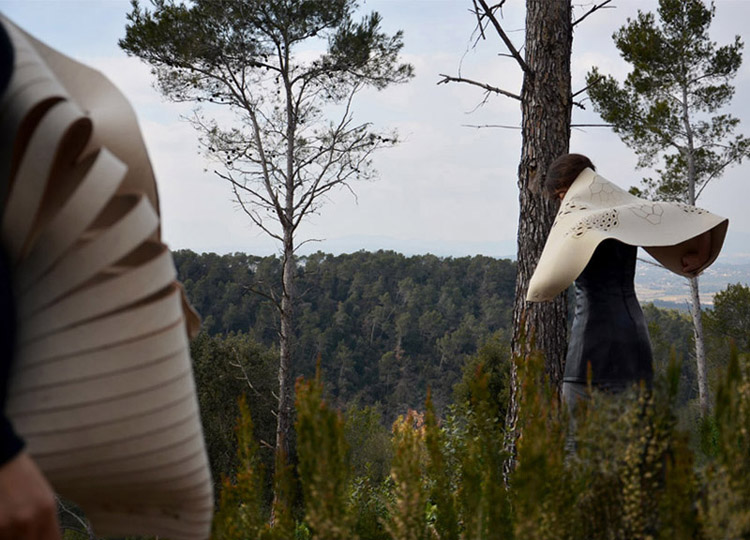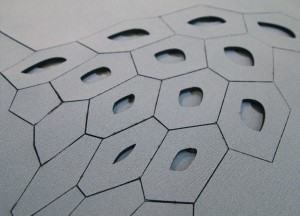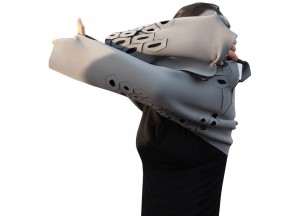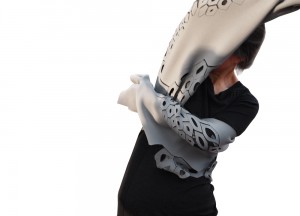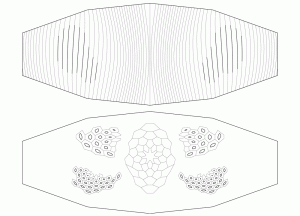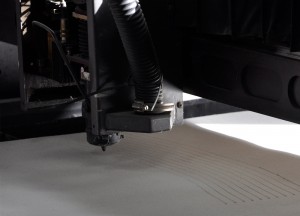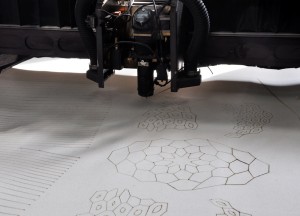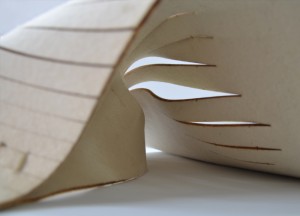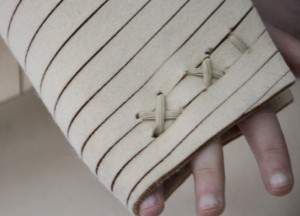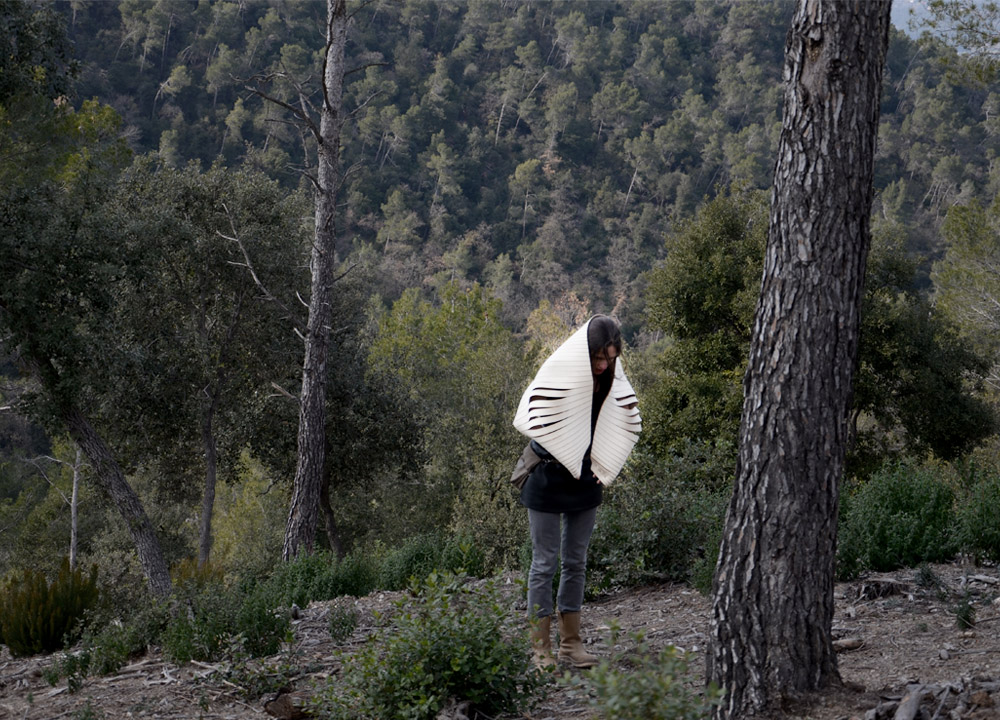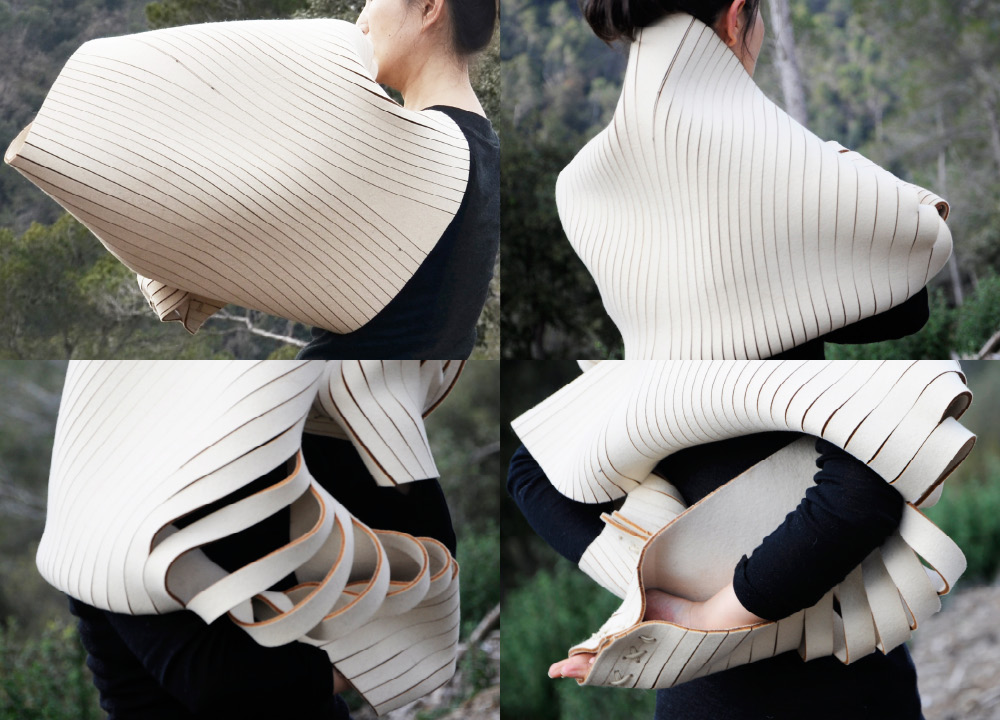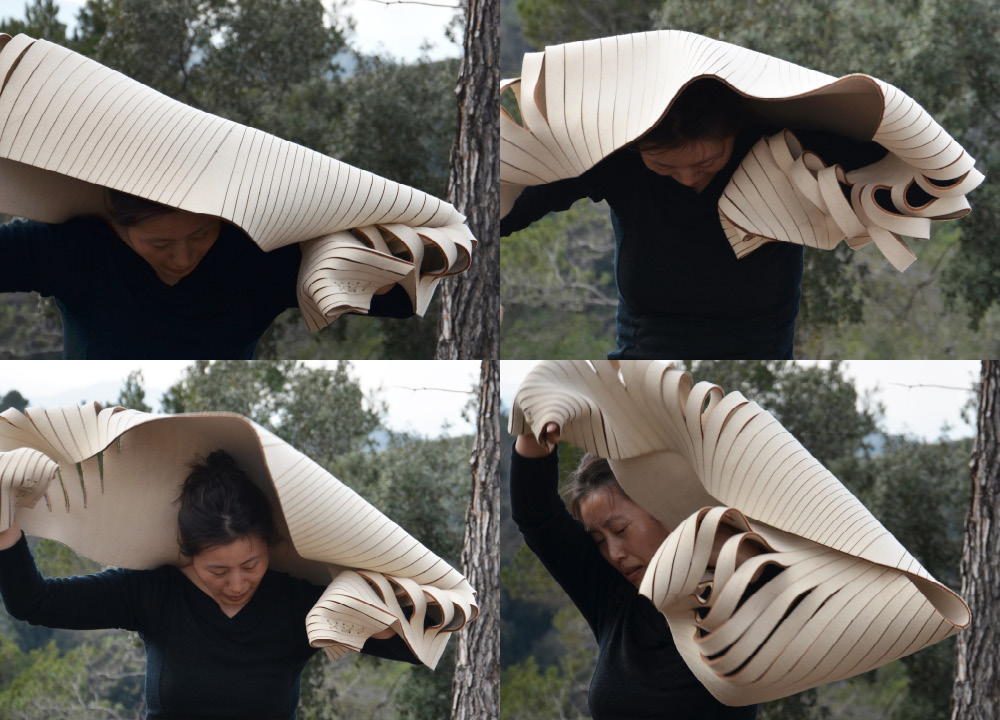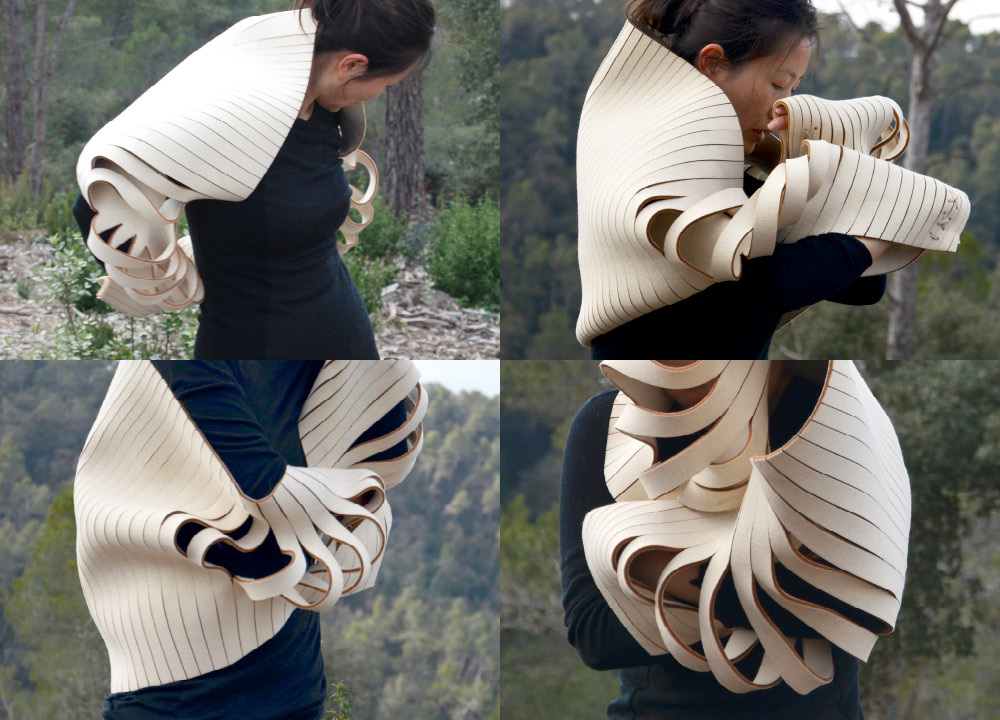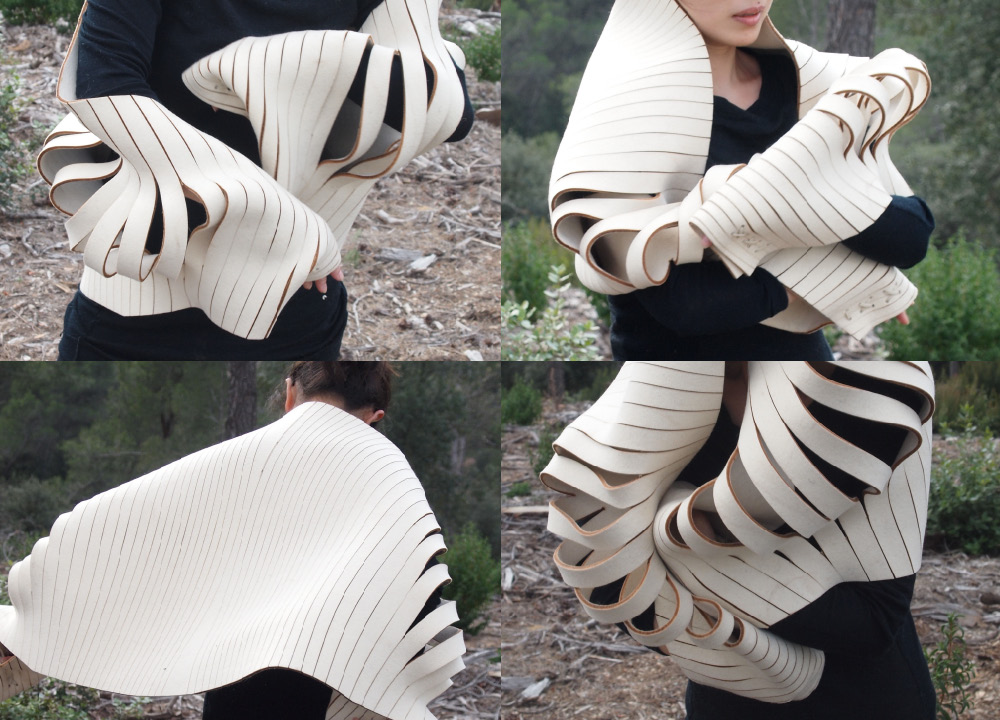The first week of this studio focussed on the experiential in the design process. In a way, you could call this a bottom up approach: our designs grew out of a personal experience each one of us had in Valldaura. This is the opposite of the top down way of designing, where an abstract, theoretical concept is the point of departure. The motto was: “show, don’t tell”. We were encouraged to focus on what we felt during our experiences in Valldaura and explore those very subjective feelings through quick prototypes.
Day 1
The first day we spent mostly in Valldaura, a place familiar for the IAACers. Each one of us had picked a particular experience related to the place and we performed it for the group on a location we chose. What we learned here was to zoom in on our senses. For example: what was it that we really liked about lying down in the grass? Were we more into looking at the clouds, or was it really about the sensation of touching the grass? We tried to avoid theory and looked at the microlevel, the small details.
Sietske taught us some techniques to build upon those experiences: through movement, through performing them. We did this collectively and we saw how what we did influenced others and vice versa. There were also some attempts to form groups based on similarities in the movements, but that only really started to work after we all did a very quick prototype of an object that enhanced our movement.
Day 2
We spent this day in ESDI – an interesting place for the IAAC participants, because we had a chance to understand the different textile techniques and their qualities.
Here we also started to work in groups. These were mixed, so each group had some people from ESDI and some from IAAC so we could combine skills. The movements in our group were all related to walking, climbing and running uphill. Our first prototype was very simple and explored the movement of the arms during running or climbing a hill. One of the things we learned from that is these simple prototypes could lead to unexpected outcomes. For example: although we focussed on the arms, our prototype also emphasized the shoulders.
We also tried get the lower body involved by connecting the arms to the legs with elastic strings.
Day 3
The idea of this day was to introduce digital fabrication into the mix. We were a bit worried as a group that we would get carried away too quickly by these tools, so we instead decided to work with lofi prototypes a bit more. We tried to understand the qualities and the behaviour of the material and how it related to our movements.
At one point we came up with a garment from a single piece of felt that covered the arms and the back. We liked to rigidness of the felt and how it constrained the movement of the arms. However, as it was, the material was a bit too rigid, so we came up with the idea of creating openings in the felt with a series of cuts. This was not only visually interesting, but it also made it easier to move when the cuts were in certain places.
The day ended with tryouts and feedback from the tutors.
Day 4
This day we spent exploring how we could use the laser cutter to expand on the idea of creating cuts to make something more flexible. We tried out neoprene, a synthetic rubber. A very nice quality we discovered was that we could create small shape that seemed to “pop out” of the material when we cut it until the middle.
We tried out a few computationally generated patterns on the laser cutter. These looked great, but we all agreed that the neoprene prototype was lacking the stiffness of the felt. Another conclusion was the pattern was a bit too big – it would more interesting to concentrate on the elbows and shoulders.
Day 5
The last day was focussed on production. We settled on a simple pattern with lines and openings around the elbows. We came up with a simple but effective idea for the hands by cross-stitching elastic bands. These provided support for the fingers.
testing the final prototypes in the context of Valldaura forest (the original place of personal experiences)
video documenting the process of developing the prototypes:
video of the final prototype on site:
project team: Gemma Vila, Bert Balcaen, Rafael Vargas Correa, Martin Lukac
photo credits: Bert Balcaen, Oscar Tomico, Rafael Vargas Correa, Martin Lukac
video credits: Rafael Vargas Correa

